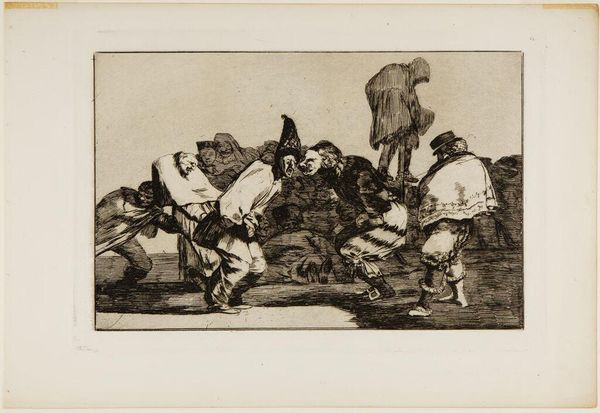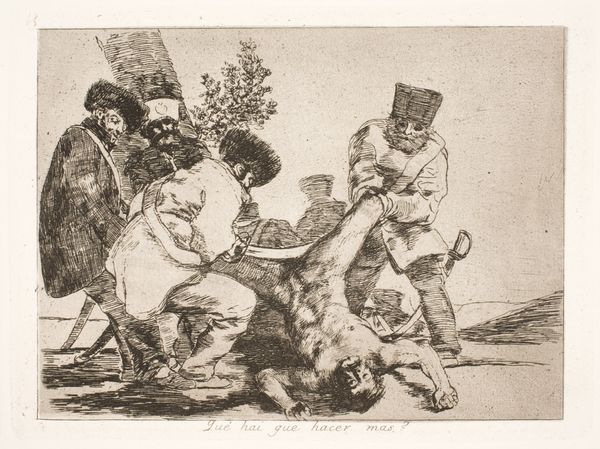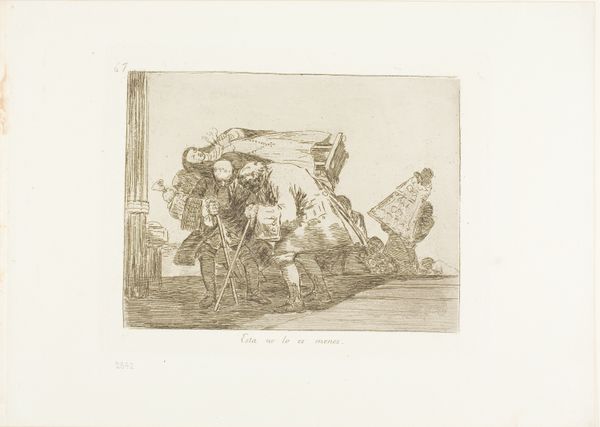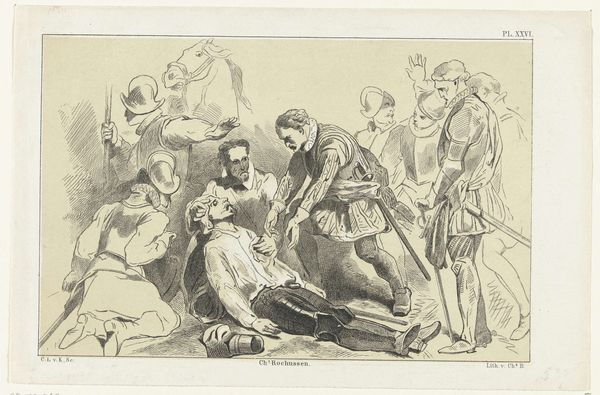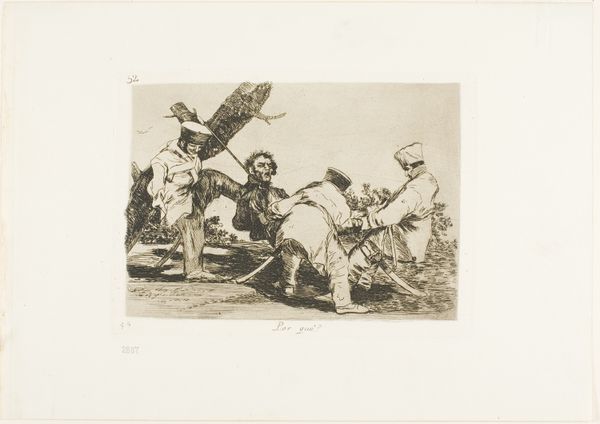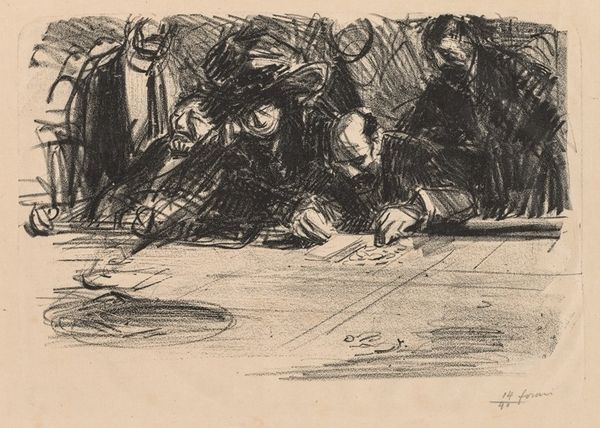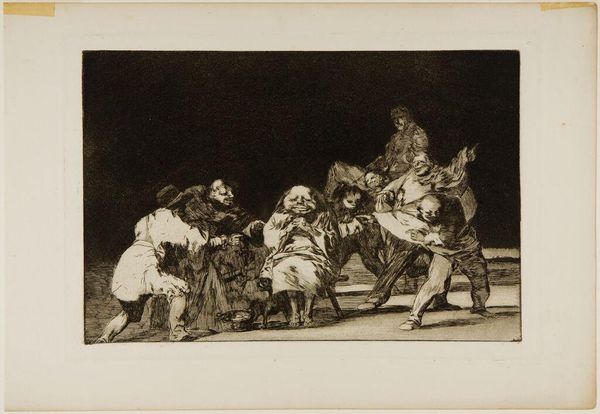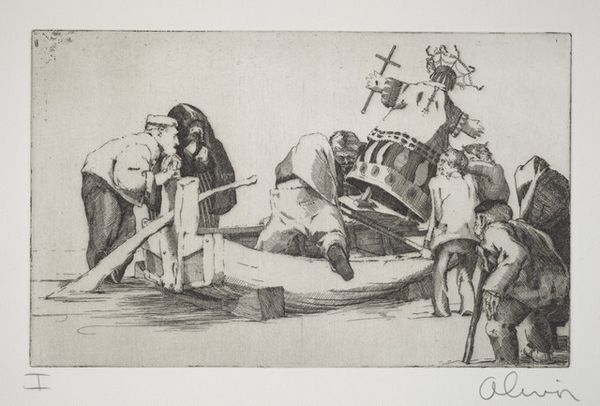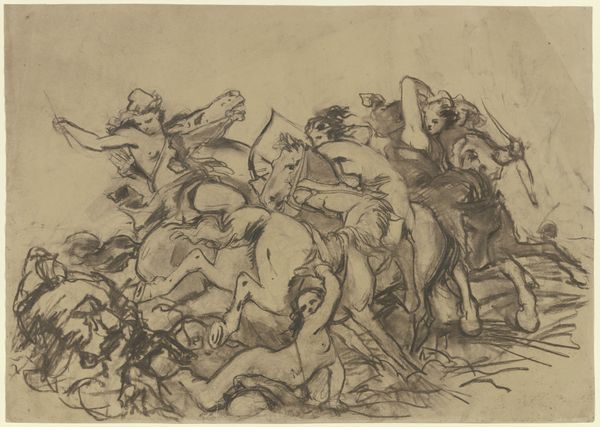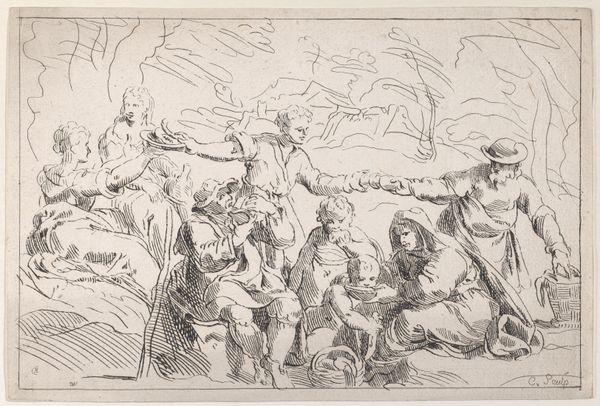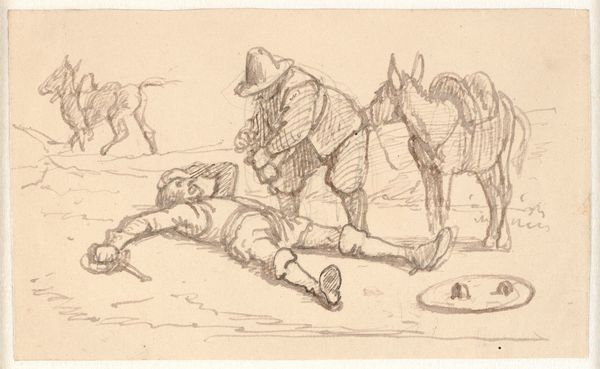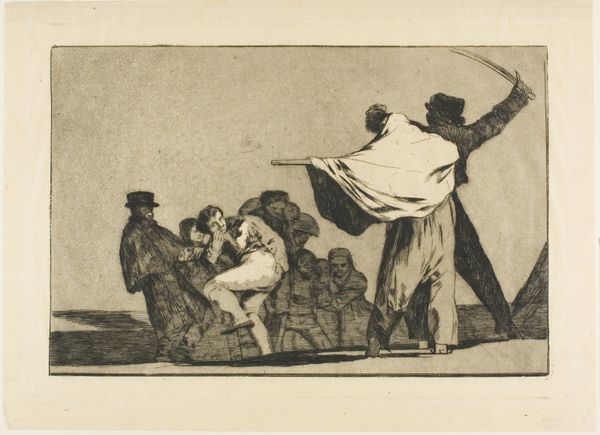![Rejoice, Carnival, for Tomorrow Thou Wilt Be Ashes [Carnival Folly] by Francisco de Goya](/_next/image?url=https%3A%2F%2Fd2w8kbdekdi1gv.cloudfront.net%2FeyJidWNrZXQiOiAiYXJ0ZXJhLWltYWdlcy1idWNrZXQiLCAia2V5IjogImFydHdvcmtzL2NiNDBmM2Q2LTNkNzUtNDAzMi1hNDA1LTUxZTBlMTZlMGRiMi9jYjQwZjNkNi0zZDc1LTQwMzItYTQwNS01MWUwZTE2ZTBkYjJfZnVsbC5qcGciLCAiZWRpdHMiOiB7InJlc2l6ZSI6IHsid2lkdGgiOiAxOTIwLCAiaGVpZ2h0IjogMTkyMCwgImZpdCI6ICJpbnNpZGUifX19&w=1920&q=75)
Rejoice, Carnival, for Tomorrow Thou Wilt Be Ashes [Carnival Folly] c. 1813 - 1820
0:00
0:00
print, etching
# print
#
etching
#
caricature
#
figuration
#
romanticism
#
genre-painting
Copyright: Public Domain: Artvee
Editor: This etching by Francisco de Goya, titled *Rejoice, Carnival, for Tomorrow Thou Wilt Be Ashes*, was made sometime between 1813 and 1820. The flurry of line work creates an uneasy mood, and I am curious to learn how Goya's choice of materials plays into its meaning. How do you interpret this work? Curator: Goya's choice of etching as a medium is absolutely central. It was, for its time, a relatively reproducible medium, allowing his critique to circulate amongst a wider audience than, say, an oil painting hung in a private collection. But think about the labor involved in creating this plate! The acid biting into the metal, the control and precision required, it’s all incredibly physical and contrasts starkly with the subject matter – the excesses and fleeting nature of Carnival. What does that juxtaposition suggest to you? Editor: It makes me think about the implied social critique... that such elaborate celebrations, these grand displays of material wealth, are actually quite fleeting when compared to the intense labor required to create them. Curator: Precisely! Consider the aquatint too. It is difficult to control tonality and texture. It’s through that particular manipulation that Goya creates these shadowy figures and monstrous visages, giving us a glimpse into what the system hides beneath the surface of “rejoicing.” How do these formal and material aspects interact with the social context in your understanding? Editor: Knowing the sociopolitical tensions in Spain during that time—between revolution and monarchy—Goya’s material choices seem almost rebellious. To embrace the gritty, reproducible nature of printmaking feels like a statement in itself. Curator: Exactly. It’s through this interplay of materials, labor, and social commentary that Goya truly makes this work resonate beyond a simple depiction of a festival. I appreciate you seeing it in this way! Editor: Thank you! I've certainly learned a lot about looking at a print in terms of process and socio-political context.
Comments
No comments
Be the first to comment and join the conversation on the ultimate creative platform.
